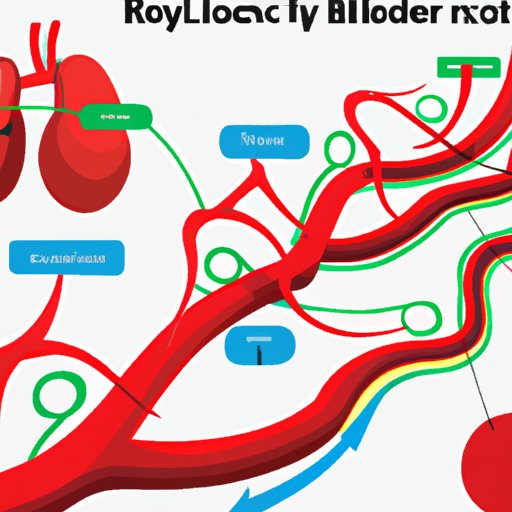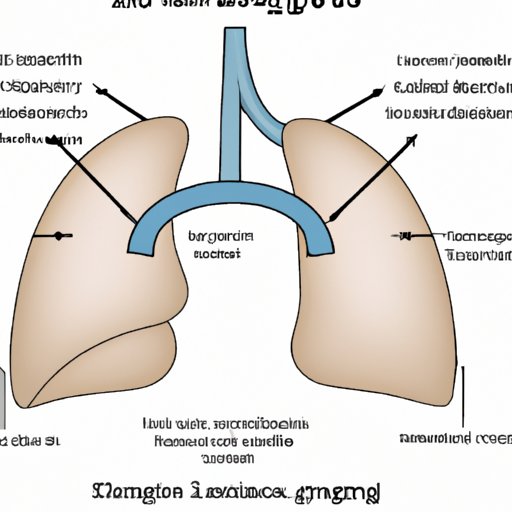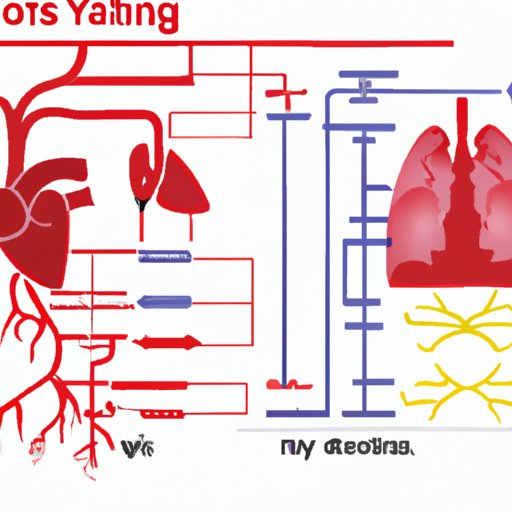Introduction
The circulatory and respiratory systems are two of the most important systems in the human body. Together, they form the foundation of our ability to survive and function. The circulatory system transports oxygen and nutrients throughout the body, while the respiratory system is responsible for taking in oxygen and expelling carbon dioxide. Both systems are closely intertwined, working together to ensure that oxygen is transported and utilized efficiently in the body.
How Oxygen is Transported and Utilized in the Human Body
Oxygen is transported around the body via hemoglobin, a protein found in red blood cells. Hemoglobin binds oxygen molecules from the lungs and carries them around the body in the bloodstream. Once it reaches the body’s tissues, oxygen is released and used by the cells for energy production. Without oxygen, cells cannot survive.

The Role of Blood in Connecting the Respiratory and Circulatory Systems
Blood plays an important role in connecting the respiratory and circulatory systems. It carries oxygen from the lungs to the rest of the body and also carries carbon dioxide away from the tissues to be expelled by the lungs. This process is known as pulmonary circulation. Without blood, the two systems would not be able to work together effectively.

The Impact of Poor Respiratory Function on the Overall Health of the Cardiovascular System
Poor respiratory function can have a significant impact on the overall health of the cardiovascular system. When the lungs are unable to take in enough oxygen, the amount of oxygen in the bloodstream decreases. This can lead to fatigue, shortness of breath, and an increased risk of heart disease. To maintain healthy respiratory and circulatory systems, it’s important to engage in regular physical activity, eat a balanced diet, and avoid smoking.

An Overview of the Mechanics of Gas Exchange in the Lungs
Gas exchange in the lungs takes place in the alveoli, tiny air sacs. Air enters the alveoli through ventilation, which is the act of breathing in and out. Inside the alveoli, oxygen is diffused into the bloodstream, while carbon dioxide is diffused out of the bloodstream. This process is repeated with each breath, allowing the body to constantly replenish its oxygen supply.
Understanding the Link Between the Lungs and Heart
The link between the lungs and heart is critical for the efficient functioning of the respiratory and circulatory systems. The heart pumps oxygen-rich blood from the lungs around the body and returns deoxygenated blood to the lungs to be replenished. This cycle ensures that the body has a continuous supply of oxygen and is able to expel carbon dioxide.
Exploring the Complexities of the Interaction Between the Respiratory and Circulatory Systems
The interaction between the respiratory and circulatory systems is complex and multi-faceted. In order for the body to remain healthy, both systems must be in balance. If one system is not functioning properly, it can affect the other, resulting in a decrease in overall health and wellbeing. For this reason, it’s important to maintain a healthy lifestyle and seek medical attention if any issues arise.
Conclusion
The circulatory and respiratory systems are essential for life. This article explored how they work together to transport oxygen and remove carbon dioxide from the body. It discussed the role of blood, the impact of poor respiratory health on cardiovascular health, and the complexity of the interaction between the two systems. By understanding the importance of these two systems and taking steps to maintain good health, we can ensure that our bodies have the oxygen they need to function optimally.
(Note: Is this article not meeting your expectations? Do you have knowledge or insights to share? Unlock new opportunities and expand your reach by joining our authors team. Click Registration to join us and share your expertise with our readers.)
